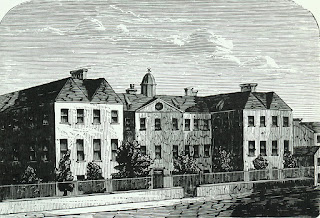
What's in a (street) name? The following is not a complete street name directory of old Glasgow. Abercrombie Street. See Bellgrove. Adam's Court. Built subsequently to Jamaica Bridge by John Adam (1767-1772?). See Jamaica Bridge John Adam built a number of antique-looking buildings in Argyle Street He was also the contractor for the first Jamaica Street footbridge (1768). Adelphi Street. The Clyde frontage was called Adelphi in honour of the Brothers Hutcheson . Albion Street Opened 1806. See Greyfriars Wynd (North Albion Street), and Grammar School Wynd (North Albion Street). Albion Street Chapel-the minister in 1794 was the Rev. James MCLeod. Anderston. Village was formed in 1725 by Anderson of Stobcross upon one of his unproductive farms. Bishop Street, Anderston-James Monteith of this street was the first who warped a muslin web in Scotland. Long before steam mills were introduced into Scotland for spinning cotton, in 1792, Mr. Monteith purchased "bird...





